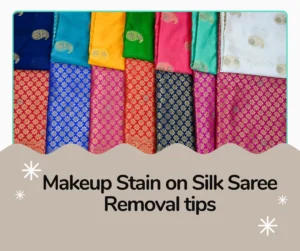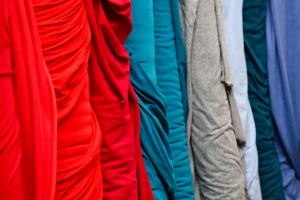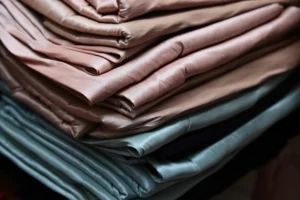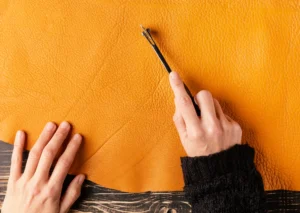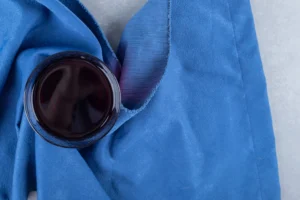Silk sarees are a symbol of elegance and grace, and keeping them in pristine condition is essential. However, makeup stains—whether from foundation, lipstick, or mascara—can quickly ruin the delicate fabric. Fortunately, with the right techniques and a bit of care, you can successfully remove makeup stains without damaging your beautiful saree. Here are four expert tips to help you tackle those makeup mishaps.
1. Act Quickly
The first rule when dealing with makeup stains on silk is to act fast. The longer the stain sits, the harder it becomes to remove. Gently blot the stain with a clean cloth or paper towel to absorb any excess makeup. Be sure not to rub, as this can spread the stain and push it deeper into the fibers. The goal is to lift off as much makeup as possible without disturbing the fabric.
2. Use a Gentle Makeup Remover or Oil-Free Cleanser
Instead of harsh chemicals or cleaning agents, opt for a mild makeup remover that’s safe for delicate fabrics. If you don’t have one on hand, an oil-free facial cleanser or micellar water can also work effectively. Apply a small amount of the remover to a cotton ball or clean cloth, and gently blot the stained area. Avoid soaking the fabric, as excess moisture can damage silk. Always test the remover on a small, inconspicuous area first to ensure it doesn’t affect the color or texture of the saree.
3. Use a Stain-Removal Paste for Tougher Stains
For stubborn makeup stains, such as foundation or long-lasting lipstick, create a paste using equal parts baking soda and water. Apply the paste gently to the stained area and let it sit for 5 to 10 minutes. Once the stain has loosened, use a soft cloth to blot the area. Baking soda works as a mild abrasive, lifting the stain without damaging the fabric. Afterward, rinse the paste off with cool water and pat the fabric dry.
4. Professional Cleaning for Best Results
If the stain persists or you’re worried about damaging your saree, it’s best to take your silk saree to a professional dry cleaner. Professionals have the tools and expertise to safely remove makeup stains from delicate fabrics like silk without compromising the fabric’s integrity. They can also treat the saree with specialized products designed for silk care.
Final Thoughts
Makeup stains don’t have to be the end of your silk saree’s beauty. With these expert tips, you can remove stains effectively while preserving the silk’s softness and sheen. However, if you’re looking for the best care for your precious sarees, FCL’s professional cleaning services are here to help! Our team of experts ensures that your silk saree gets the best treatment, restoring its beauty and elegance. Contact us today for safe and reliable silk saree stain removal services!
